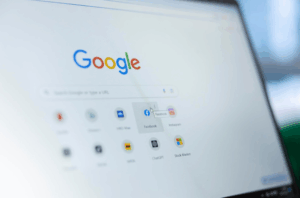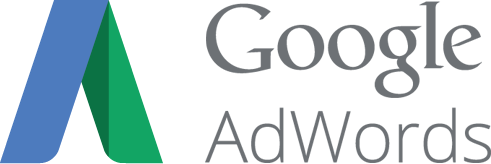Google Ads’ Performance Max (PMax) campaigns have taken digital advertising by storm, offering AI-driven automation and multi-platform reach like never before.
Unlike traditional search or display ads, PMax allows advertisers to show their ads across Google’s entire ecosystem, including:
- Search
- YouTube
- Display Network
- Discover
- Gmail
- Google Maps
While automation makes it easier to launch campaigns, many advertisers struggle to optimize PMax for maximum conversions. That’s where expert strategies come in!
In this guide, we’ll break down the most effective Performance Max strategies that will help you increase ROAS (Return on Ad Spend), reduce wasted ad spend, and drive more sales or leads.
Understanding How Performance Max Works
Performance Max is an AI-powered, goal-based campaign type that automates bidding, targeting, and ad placements across Google’s ad networks. Unlike traditional campaigns where advertisers manually set audience segments, PMax uses machine learning to find high-converting users automatically.
Why Use Performance Max?
Automated Ad Placements: Google optimizes where your ads appear based on where conversions are happening.
Audience Expansion: PMax finds new potential customers beyond your preset targeting.
Full-Funnel Approach: Targets users at different stages of the buyer’s journey.
AI-Driven Optimization: Google automatically adjusts bids, creatives, and placements.
However, to get the best results, advertisers need to optimize PMax strategically, which we’ll cover next.
Optimizing Performance Max Campaigns for More Conversions
To maximize your conversions, you need to fine-tune Performance Max beyond its default settings.
Best Practices for a High-Converting PMax Campaign
Feed Google with High-Quality Data: Upload first-party data (customer lists, CRM data) to help AI find high-value customers.
Use Strong Creative Assets: Include videos, high-resolution images, compelling headlines, and descriptions.
Leverage Audience Signals: Add custom audiences, past buyers, and website visitors to guide AI learning.
Optimize for Conversions, Not Clicks: Set conversion-focused goals (Target ROAS, Maximize Conversions) to get better results.
Analyze Performance Weekly: AI improves over time, so monitor which channels are working best and refine your approach.
Pro Tip: Use seasonality adjustments during sales periods (Black Friday, holiday promotions) to increase ad spend and conversion rates.
How to Structure Your Asset Groups for Maximum Impact
Asset Groups in PMax are similar to Ad Groups in standard Google Ads campaigns. They contain various creatives (text, images, and videos) that Google dynamically mixes and matches across different platforms.
Expert Strategy: Creating Multiple Asset Groups for Different Audiences
To maximize conversions, separate your asset groups based on different buyer personas:
Asset Group 1 – High-Intent Buyers:
Showcase product USPs, testimonials, and competitor comparisons.
Asset Group 2 – Middle-of-Funnel Users:
Highlight unique features, industry use cases, and case studies.
Asset Group 3 – Cold Audiences:
Use brand awareness videos, storytelling ads, and educational content.
Pro Tip: Test different variations of headlines and descriptions to find what resonates best.
Leveraging Audience Signals to Improve Targeting
Audience Signals help Google’s AI learn faster by providing a starting point for targeting.
Best Audience Signals to Use in Performance Max
- First-Party Data (Customer Lists, CRM Uploads) → Retarget past buyers with similar offers.
- Website Visitors → Create a retargeting list of users who engaged with key pages.
- Custom Intent Audiences → Target users actively searching for competitor brands.
- YouTube Engagers → Reach people who watched industry-related videos.
By updating audience signals regularly, you allow Google’s AI to refine its targeting for better results.
Pro Tip: Avoid relying on one audience type—mix website traffic, CRM data, and engagement-based audiences for better reach.
Budget & Bidding Strategies for Maximum Conversions
Example of choosing the right bidding strategy
Maximize Conversions – Best for new campaigns without historical data.
Maximize Conversion Value – Ideal for eCommerce businesses that track revenue.
Target ROAS (Return on Ad Spend) – Works best after 2-4 weeks of data collection.
Target CPA (Cost per Acquisition) – Best for lead generation campaigns.
Scaling Performance Max Campaigns the Right Way
Increase budget gradually (10-20% per week) to allow AI to adjust.
Monitor which channels (Search, YouTube, Display) drive the most conversions and adjust spend accordingly.
Exclude low-performing placements (if certain placements don’t convert, remove them).
Pro Tip: Let the AI gather data for at least 2-3 weeks before making significant adjustments.
Analyzing PMax Performance & Key Metrics to Track
Take a look as some of the most important Google Ads reports to analyze
- Insights Tab → Shows top-converting audiences and demographics.
- Search Terms Report → Helps discover high-intent search queries.
- Placement Performance Report → See which channels (Search, YouTube, Display) work best.
- Conversion Paths Report → Understand the customer journey before conversion.
Pro Tip: Implement offline conversion tracking to measure the full impact of Performance Max on sales and lead quality.
Common Mistakes to Avoid in Performance Max Campaigns
- Not Providing Enough Creative Assets → Leads to repetitive ads and poor engagement.
- Ignoring Audience Signals → Makes AI learning slower and less efficient.
- Setting Unrealistic ROAS/CPA Goals Too Early → Start with broad data collection first.
- Not Reviewing Placement Reports → Some placements may waste budget without conversions.
Fix: Regularly check insights and adjust settings to optimize conversions.
Google Ads Performance Max is one of the most powerful tools available to advertisers today. However, success depends on strategic execution.
Best practices include leveraging AI-driven audience optimization, using first-party data & audience signals for better targeting, optimizing creative assets & bidding strategies, and regularly analyze reports & adjust campaigns for higher ROAS.
By applying these expert strategies, you’ll maximize conversions and outperform your competition with Google Performance Max in 2025.
Ready to scale your Performance Max campaigns? At Create The Movement, we specialize in AI-driven digital marketing strategies that optimize your ad spend, increase conversions, and scale your business with cutting-edge techniques.
Contact us today for a FREE consultation. Let’s take your Google Ads results to the next level.











